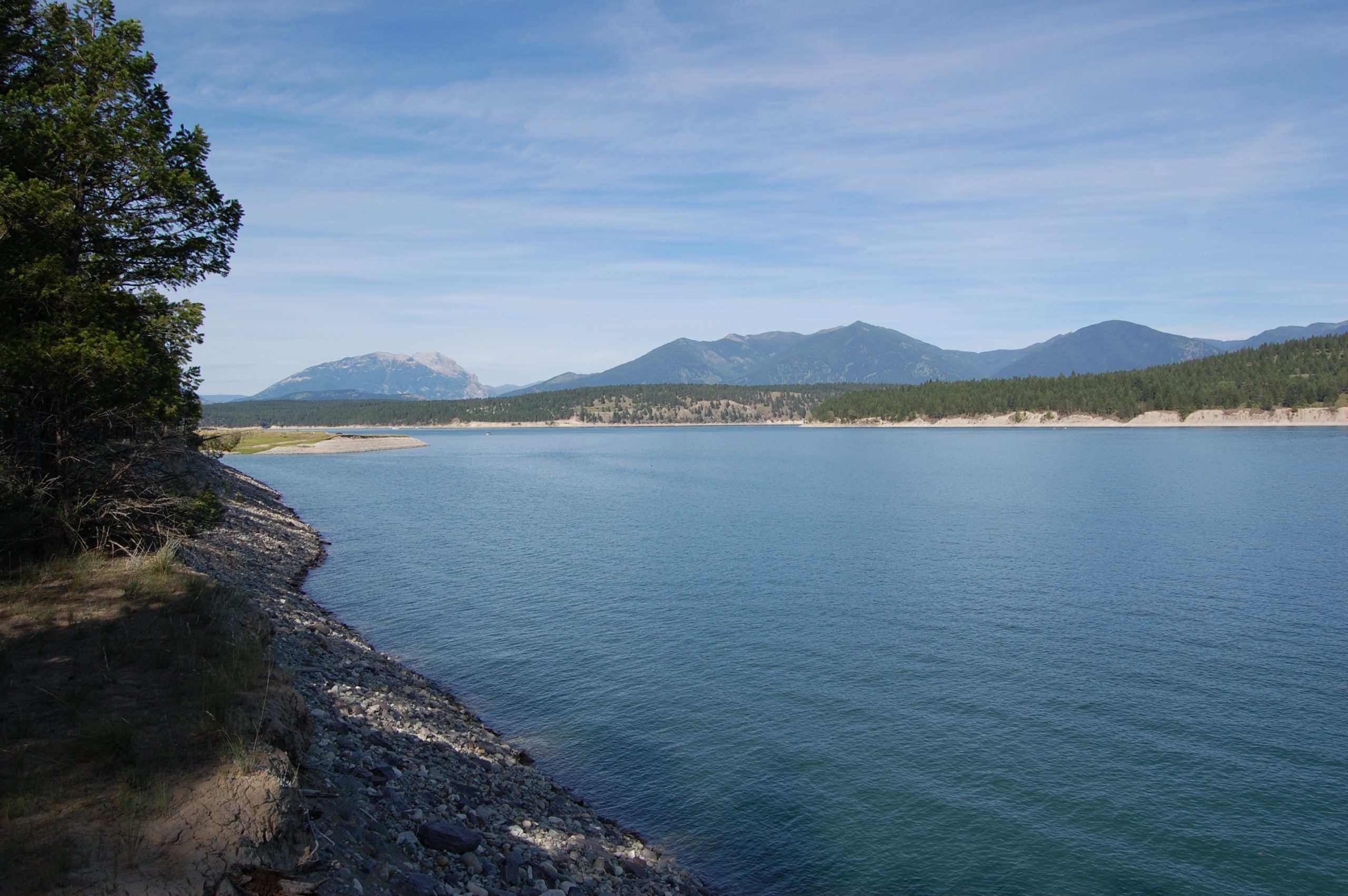The RDEK is grappling with the appropriate course of action to address repeated water level issues on Koocanusa. With ongoing negotiations about the Columbia River Treaty, there are a number of options to tackle the recurring problem.
As has been the case since the Libby Dam was first constructed in 1973, the U.S. Army Corps of Engineers dictates Koocanusa’s water levels in both Canada and the United States. As per the Columbia River Treaty, Canada does not have any direct impact on the Libby Dam’s operations or control of Koocanusa.
With water levels consistently rising or falling over the years, local residents and businesses want to see levels firmly mandated on the Canadian side of the border so tourism, recreation, and the overall ecosystem aren’t negatively impacted.
How the current system operates, Rob Gay said now is the time to discuss the long-standing issue.
“It doesn’t allow us any predictability in what the water levels will be at any time during the summer, it’s strictly a United States decision,” said the Chair of the RDEK. “We think it’s a great time right now because negotiations are going on over the Columbia River Treaty to talk about that – to have a discussion to see what are some of the negative impacts on Canada not having joint operation of that dam.”
However, when the discussion came before the RDEK Board of Directors there were differing opinions on what to do.
There was a motion on the floor that the RDEK send a letter to the B.C. Ministry of Energy, Mines and Petroleum Resources, Electricity and Alternative Energy Division. That letter would request that in the renewal of the Columbia River Treaty, the Libby Dam operations require the Koocanusa Reservoir to be maintained at 2,450 feet. The letter would also include that if those negotiations with the United States were not possible, that the Government of Canada moves forward with constructing a dam across the Koocanusa Reservoir at a height of 2,459 feet.
The motion was defeated by the RDEK Directors, and no further action has been taken by the Board at this time.
While there were varying opinions on how to proceed, Gay believes the RDEK agrees they want predictability for Koocanusa’s water levels because of its impact on the ecosystem, agriculture, tourism, and recreation – not just on flood-control and power from the Libby Dam.
The B.C. Governmet did undertake a full feasibility study on constructing a low-level dam or weir across the Canadian portion of Koocanusa so levels could be regulated. The 61-page study said the weir is most likely projected to cost greater than $400,000 to build, while annual maintenance and operation could be anywhere from $560,000 to $1.4-million.
MORE: Lake Koocanusa: High Level Assessment of a Proposed Dam (B.C. Government)
PREVIOUS: Virtual Town Hall exploring the feasibility of dam across Koocanusa Reservoir (Jan. 12, 2021)
Gay said some members of the RDEK didn’t like that the study was holding Koocanusa’s water levels too low at 2,440 feet, rather than 2,450 feet, which has been voiced by the public. Gay noted that there are still questions to be answered about building the low-level dam, including who would front the significant cost of the project.
Knowing that the Libby Dam can fully control Koocanusa’s water levels, other members of the RDEK wondered if the weir is even necessary. Their view was that if Canada can negotiate the new Columbia River Treaty and secure joint operation of the Libby Dam with the United States, then the water levels would no longer be a concern as Canada would have direct say on the dam’s operation moving forward.
A number of topics were still left up in the air, including the fact that the proposed letter didn’t have any mention of input from the Ktunaxa Nation on the low-level dam. Gay said there was also interest in an ecosystem study being completed following the feasibility study from the B.C. Government. Gay said that way the RDEK could know exactly what the impacts would be on local habitat, agriculture, tourism, and recreation from the varying water levels.
“We’re hung up on this a little bit but I think the point is around the predictability of the reservoir level, I don’t think that’s a dispute, but again, how we get there is something that we’re still looking at,” Gay told MyEastKootenayNow.com. “We’re looking at what partners we need to talk to, and what the proper process should be is. Should we be writing a letter? Should we be writing a letter to the local committee that looks after the treaty? Lots of things up in the air right now.”
Although the Columbia River Treaty is a federal negotiation between Canada and the United States, the RDEK does have some say through the local governments’ committee. The committee recently expressed their recommendations for the Columbia River Treaty, including a specific recommendation about Koocanusa.
“B.C. water licenses for the other Treaty dams create requirements for Water Use Plans and other mechanisms to address local impacts. As there isn’t a B.C. water license for Libby Dam, these mechanisms don’t exist for Koocanusa Reservoir,” read the recommendation from the local governments’ committee. “B.C. Hydro benefits from this reservoir through power generation at the Kootenay Canal and does undertake some activities to reduce impacts including annual debris removal. However, community members and local governments have identified several impacts that require further attention including recreation access management and enforcement in the drawdown zone; agriculture supports to mitigate impacts; ecosystem and fish/wildlife baseline studies and habitat enhancement; and ongoing debris removal. The Committee strongly encourages B.C. Hydro, the Province, Indigenous Nations and CBT to work together to address the identified impacts.”
The local government committee also recommended that Canada has input on Libby Dam’s operations moving forward.
The Province must bring Libby Dam fully into the Treaty so that it can be managed as the Committee recommends for other Treaty dams – for power generation, flood control, ecosystem functions, recreation, tourism and other interests. This management needs to include a formal mechanism to ensure Canadian interests are meaningfully incorporated into operational decisions at Libby Dam, just as U.S. interests are accounted for in the operation of the Canadian Treaty dams,” said the local governments’ committee. “As well, a compensation mechanism, paid for by those who benefit, is needed to address the negative impacts in Canada from Libby Dam operations. These include reductions in fish and wildlife habitat; floating debris; dust storms; damage to dikes in the Creston area; and economic damage to property and infrastructure from fluctuating water levels.”
For now, the discussion remains open-ended at the RDEK level. They may decide to proceed and some take action steps, or they may simply wait out the Columbia River Treaty negotiations, knowing their concerns are being heard by the local governments’ committee.
MORE: Lake Koocanusa Presentation to RDEK (B.C. Government)


